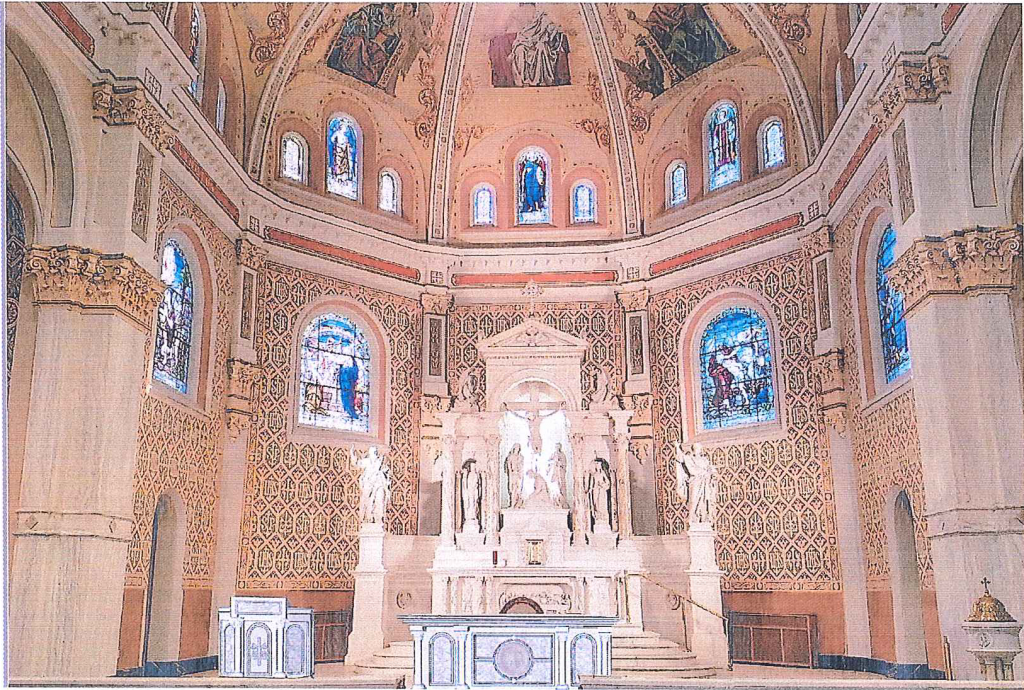Dear Friends in Christ,
The weekend of April 24, 2021, I made the announcements at all of our Masses that – through the generosity of two donors – our parish has secured a new altar and ambo for our parish church. Highlighting my comments, I stated:
- No direct appeal was made by me at any time to “fund” this project;
- The new altar and ambo are not being taken from our parish operating budget;
- These donors made a sacrificial gift for the purchase of the altar and ambo as a “restricted gift,” meaning I have a responsibility to honor their request and direct this gift for this specific purpose.
I am humbled and grateful to these donors for a gift that will bless our sanctuary for generations to come, and is a testament to the faith of our people. Bishop Thomas, in his letter of approval to me, stated: “Father Hite, the altar and ambo will be a testament to the generosity of the faithful and the crowning feature to your church restoration project. It is my sincere hope that, when I bless the ambo and consecrate the altar, you will return to concelebrate on such an auspicious occasion.”
The altar and ambo are being crafted in Carrara, Italy – the same type of marble that was used to construct the “high altar” and communion rail. It is a veneer that will be consistent with the architectural style of our present sanctuary. Installation date is scheduled for sometime in late October, 2021, but certainly before Thanksgiving.

CATECHESIS ON THE ALTAR AND AMBO
Stone altars have a rich history in the Catholic Church, one that has multiple levels of symbolism.
The General Instruction of the Roman Missal advises, “In keeping with the Church’s traditional practice and with what the altar signifies, the table of a fixed altar should be of stone and indeed of ‘natural stone.’”
The General Instruction goes on to explain, “It is desirable that in every church there be a fixed altar, since this more clearly and permanently signifies Christ Jesus, the Living Stone.” This refers to multiple scripture passages, such as, “You are fellow citizens with the holy ones and members of the household of God, built upon the foundation of the apostles and prophets, with Christ Jesus himself as the capstone [Ephesians 2: 19-20]”.
Even Jesus referred to himself as the “cornerstone.” “Jesus said to them, did you never read in the scriptures: ‘The stone that the builders rejected has become the cornerstone; by the Lord has this been done, and it is wonderful in our eyes. [Matt. 21:42]?’”
Historically speaking, stone has the added dimension of recalling the first Christians, who celebrated Mass on the top of stone tombs in the catacombs, remembering Jesus’ sacrifice on the cross and the placement of his body in a stone tomb.
Nikolaus Gihr explains this history in The Holy Sacrifice of the Mass: “In the Catacombs, as a rule, the martyr’s grave, covered with a stone slab or with a large stone projecting from its side, formed the altar for the celebration of the Sacrificial Mysteries. This form of our altar reminds us of the stone on which the martyred Body of Christ reposed when in the sepulcher, and, consequently, the death of Christ. Christian altars were, therefore, formerly made of wood and sometimes of stone; they were in the shape sometimes of a table and sometimes of a coffin.”
The ambo (pulpit) is not only the place where we venerate God’s holy Word, but the place from which this Word is proclaimed to us. It forms one of two of the parts of our celebration of the Eucharist: the Liturgy of the Word. The ambo will be placed on the right side (to the congregation’s left) in our sanctuary.
The altar is clearly the focal point of our sanctuary. It is the place where the Sacrifice of Christ is offered – sacramentally re-presented – and has particular prescriptions according to the Roman Missal. For example, a relic of St. John the Apostle will be inserted under the top of the altar, and is to be immovable – that is, permanent. The top of the altar will be inscribed with 5 small crosses, representing the five wounds of Christ, whose sacrifice is continually offered – sometimes as often as three times daily, as well on every weekend and holyday.
Father Gregory Hite, Pastor

